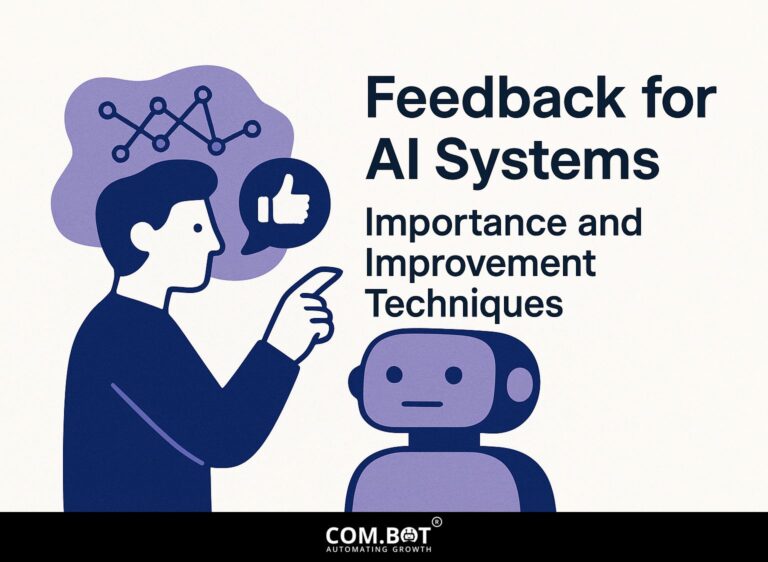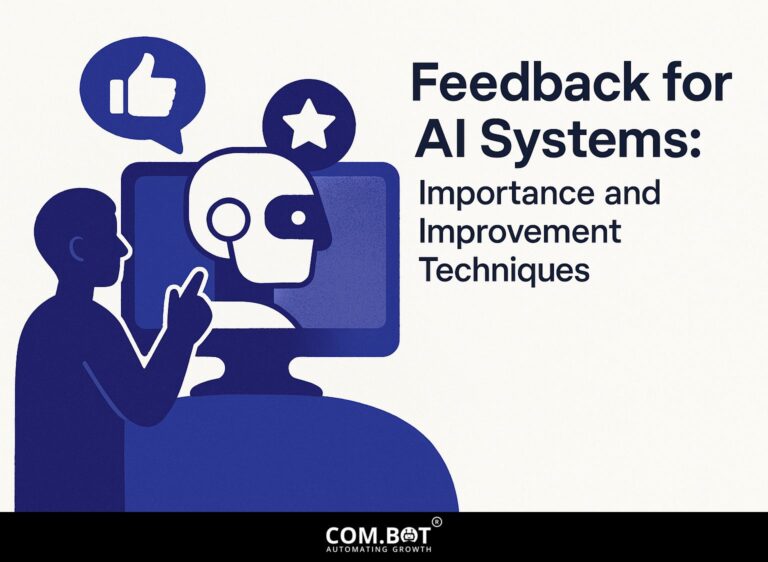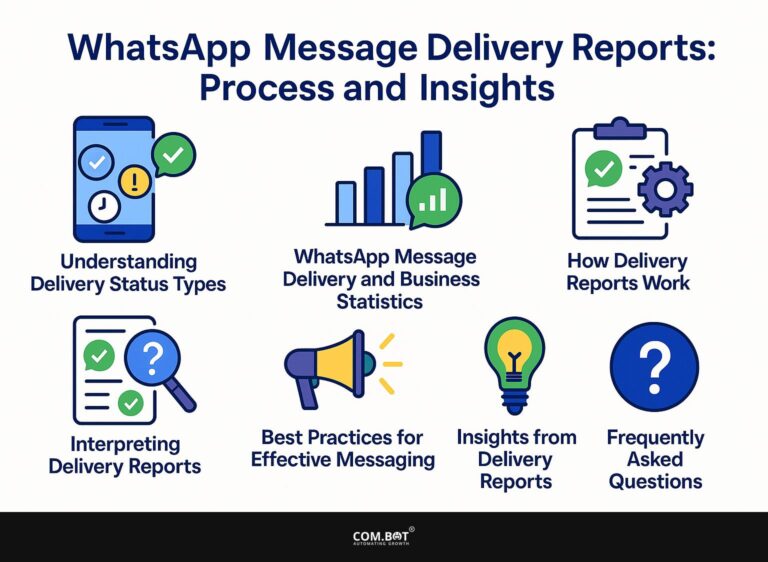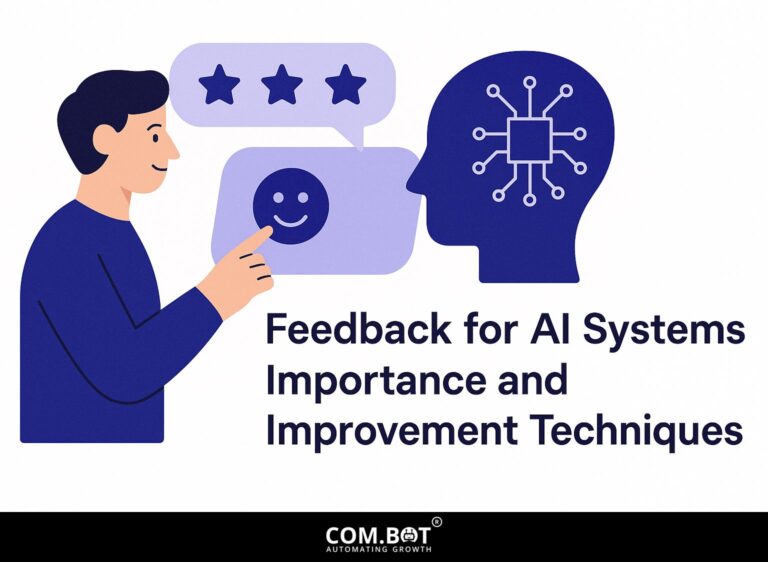Feedback for AI Systems: Importance and Improvement Techniques
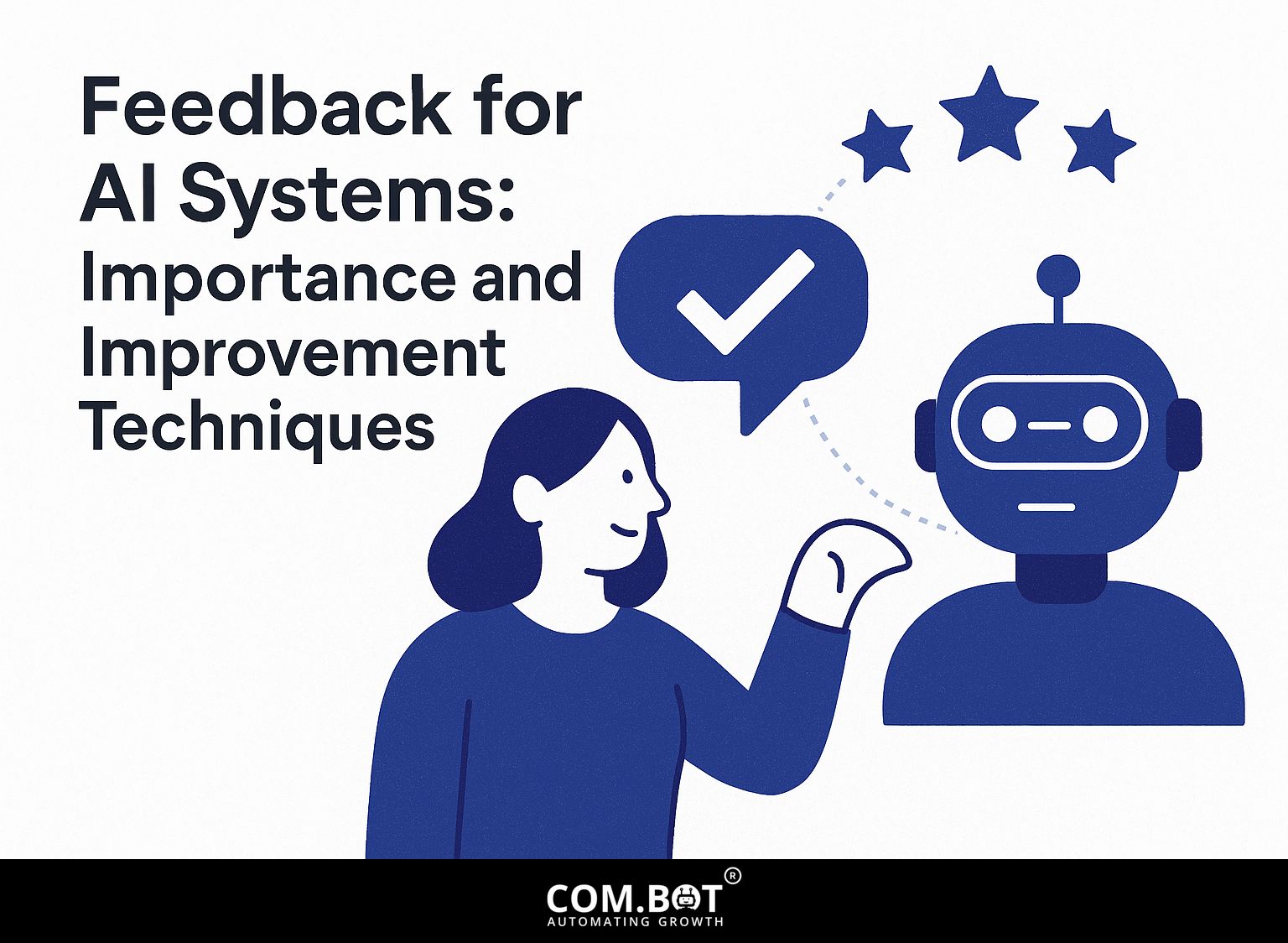
As artificial intelligence develops rapidly, feedback from people is important for making AI systems better. By using reinforcement learning and tools like Label Studio, developers can make machine learning models better, leading to improved accuracy and a better user experience. This article discusses why feedback is important in developing AI and shares practical ways to collect and analyze data correctly, ensuring your AI systems are intelligent and user-friendly.
Key Takeaways:
- 1 AI Feedback Mechanisms Statistics
- 2 Importance of Feedback for AI Systems
- 3 Types of Feedback
- 4 Techniques for Collecting Feedback
- 5 Analyzing Feedback Data
- 6 Implementing Feedback for Improvement
- 7 Challenges in Feedback Implementation
- 8 Future Trends in AI Feedback Systems
- 9 Frequently Asked Questions
- 9.1 What is the importance of feedback for AI systems?
- 9.2 How does feedback improve the performance of AI systems?
- 9.3 What are some techniques for providing effective feedback to AI systems?
- 9.4 Why is it important to regularly provide feedback to AI systems?
- 9.5 Is human feedback necessary for AI systems to improve?
- 9.6 Can AI systems provide feedback to humans?
Definition and Overview
AI feedback involves gathering, studying, and using user opinions to make AI models and systems better.
This feedback loop is essential for refining AI performance. For instance, OpenAI encourages users to rate responses or report inaccuracies, directly influencing model training.
Tools like UserVoice help gather structured feedback from interactions, enabling developers to identify common pain points.
Implementing A/B testing allows teams to compare AI response outcomes based on user preferences. Each of these methods improves AI accuracy and ensures it remains user-centered, adjusting as needs develop.
Role of Feedback in AI Development
Feedback is important in AI development, helping to make continuous improvements that increase model accuracy and user experience.
One noticeable example is the improvement of Google’s search algorithms. User actions, like clicks and searches, help improve search results.
In the same way, OpenAI improved its language models by gathering user feedback on generated text, which resulted in repeated updates that improved clarity and relevance.
These case studies demonstrate that using user feedback with reinforcement learning changes results to align with user preferences and promotes collaborative enhancement of AI systems, improving their performance over time. This approach aligns with the strategies discussed in our analysis on the influence of generative AI on public opinion, highlighting how user interactions shape AI development.
AI Feedback Mechanisms Statistics
AI Feedback Mechanisms Statistics
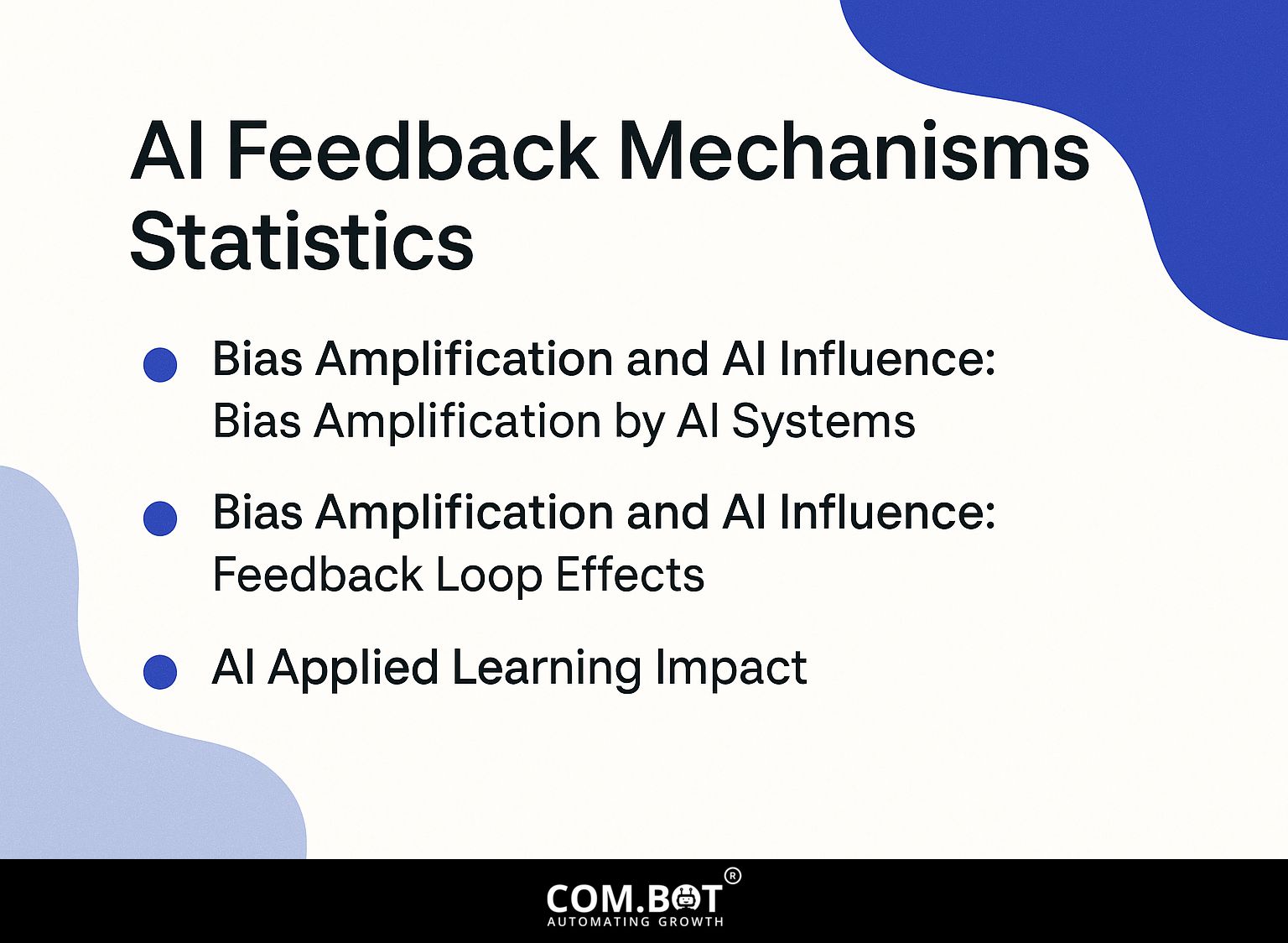
For those interested in understanding the vital role of feedback mechanisms in AI, exploring how these systems can be improved is crucial. A deeper dive into feedback for AI systems: importance and improvement techniques provides valuable insights into optimizing these processes.
Bias Amplification and AI Influence: Bias Amplification by AI Systems
Bias Amplification and AI Influence: Feedback Loop Effects
Bias Amplification and AI Influence: AI Applied Learning Impact
The AI Feedback Mechanisms Statistics Look into the connection between human biases and AI systems. Concentrate on how AI can either make these biases stronger or weaker and how they influence decisions. These statistics show how AI strongly affects the choices people make and how they view things.
Bias Amplification and AI Influence reveal that 53.08% of human participants demonstrated initial biases. However, when working with AI systems, this bias increased to 65.33%, highlighting the potential of AI to exacerbate pre-existing human prejudices. Regular contact resulted in more bias developing over time, with 56.3% of participants showing heightened biases, indicating the need for careful design and monitoring of AI systems to prevent unintended consequences.
Feedback Loop Effects are critical as they show how AI interactions can alter human decisions. A significant 32.72% of decisions changed when participants encountered disagreeing AI responses, illustrating that AI can influence human judgment, whether through disagreement or differing responses. Notably, AI-induced bias saw a 6.54% increase Over time, showing the significant impact of ongoing AI interaction on human thinking.
AI Applied Learning Impact provides some positive insights. Using accurate AI systems led to a 3.55% improvement in accuracy AI can improve human decision-making when it accurately uses factual information. When AI was seen as human, it led to a 4.25% improvement in decisions, highlighting the value of human-like interaction in creating better results.
Overall, these statistics highlight that AI can both increase biases and help make better decisions. Knowing these factors is important for creating AI systems that improve human decision-making while reducing the risk of increasing bias.
Importance of Feedback for AI Systems
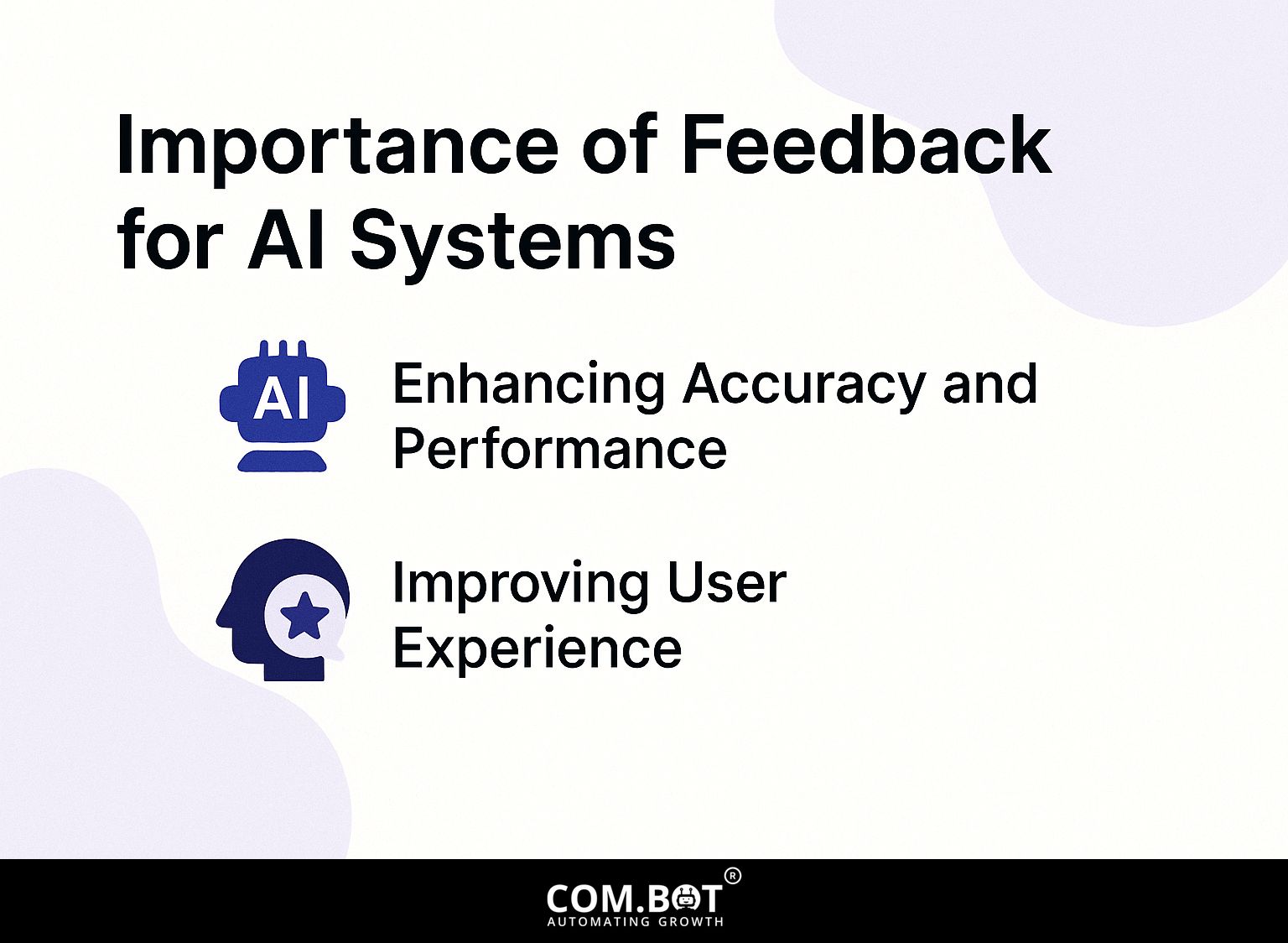
Considering user feedback greatly improves how well AI systems work, making it an important part of AI creation.
Enhancing Accuracy and Performance
AI feedback systems can improve model accuracy by 30%, resulting in outcomes that better align with user expectations.
For instance, Amazon employs a feedback loop that collects user interactions and adjusts recommendations in real-time. This continuous learning process means that if a user frequently purchases eco-friendly products, the system will prioritize similar items.
Tools like AWS SageMaker can help data scientists implement such feedback systems, allowing for A/B testing and performance tuning. AI models can use user feedback to rapidly update their algorithms, improving decisions and making users happier over time.
Improving User Experience
Using feedback well makes AI work better and makes users happier and more satisfied.
In sectors like healthcare, studies show that integrating user feedback into AI systems can lead to a 25% increase in patient satisfaction scores.
For example, telehealth platforms that change responses based on what users say often see a 15% drop in appointment cancellations. In customer support, AI-powered chatbots that learn from immediate feedback increase the number of issues resolved by more than 30%.
Tools like Zendesk and Qualtrics help gather this feedback quickly, allowing companies to change their AI models and make service better.
Types of Feedback
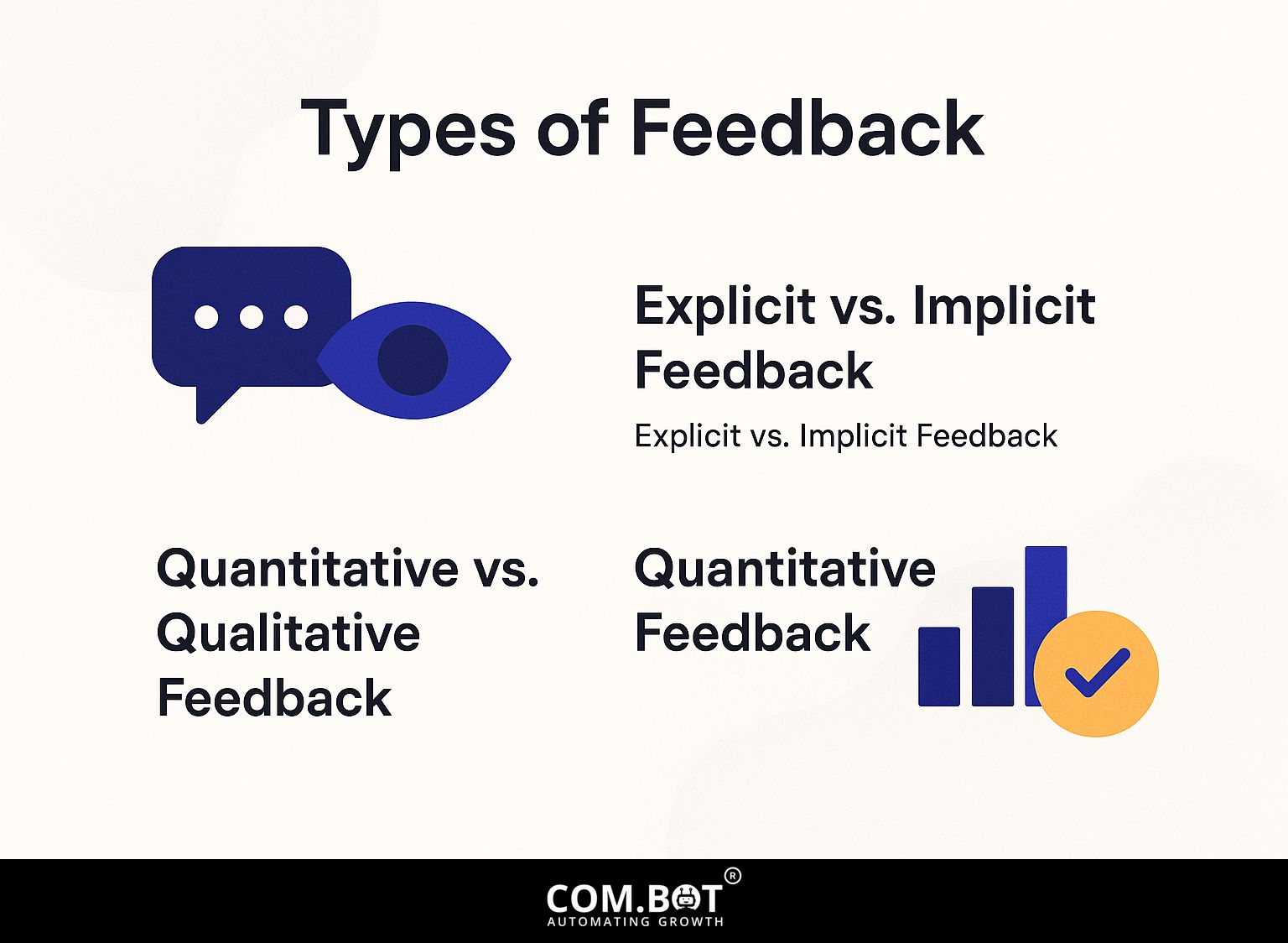
Knowing the various kinds of feedback is key to adjusting AI systems to fit a wide range of user needs effectively. Implement this by following the insights in our guide to feedback for AI systems, which details importance and improvement techniques.
Explicit vs. Implicit Feedback
Explicit feedback includes direct answers from users, and implicit feedback comes from user behavior data, both important for AI adjustments.
Explicit feedback gives clear information, like user ratings or comments, directly showing preferences. For example, an AI music recommendation system can ask users to rate songs after playback.
In contrast, implicit feedback captures user actions-like skipped tracks or repeated plays-to infer preferences without direct input. Services such as Spotify use two approaches: direct ratings help make better suggestions later, and listening patterns instantly adjust the algorithms.
These methods lead to more precise and customized user experiences, increasing participation and satisfaction.
Quantitative vs. Qualitative Feedback
Quantitative feedback provides specific numbers, and qualitative feedback offers clearer ideas. Both are needed for a full AI evaluation.
Quantitative feedback typically includes metrics like accuracy rates, error counts, or processing speeds. For instance, in refining a language model, developers might analyze user interactions, looking at how often a model’s predictions are correct.
In contrast, qualitative feedback might focus on user feelings or how suitable the context is. For example, AI researchers might collect comments on chatbot interactions to assess whether the responses were perceived as friendly or relevant.
Using both types gives a complete view of how the model works, helping improve AI versions.
Techniques for Collecting Feedback
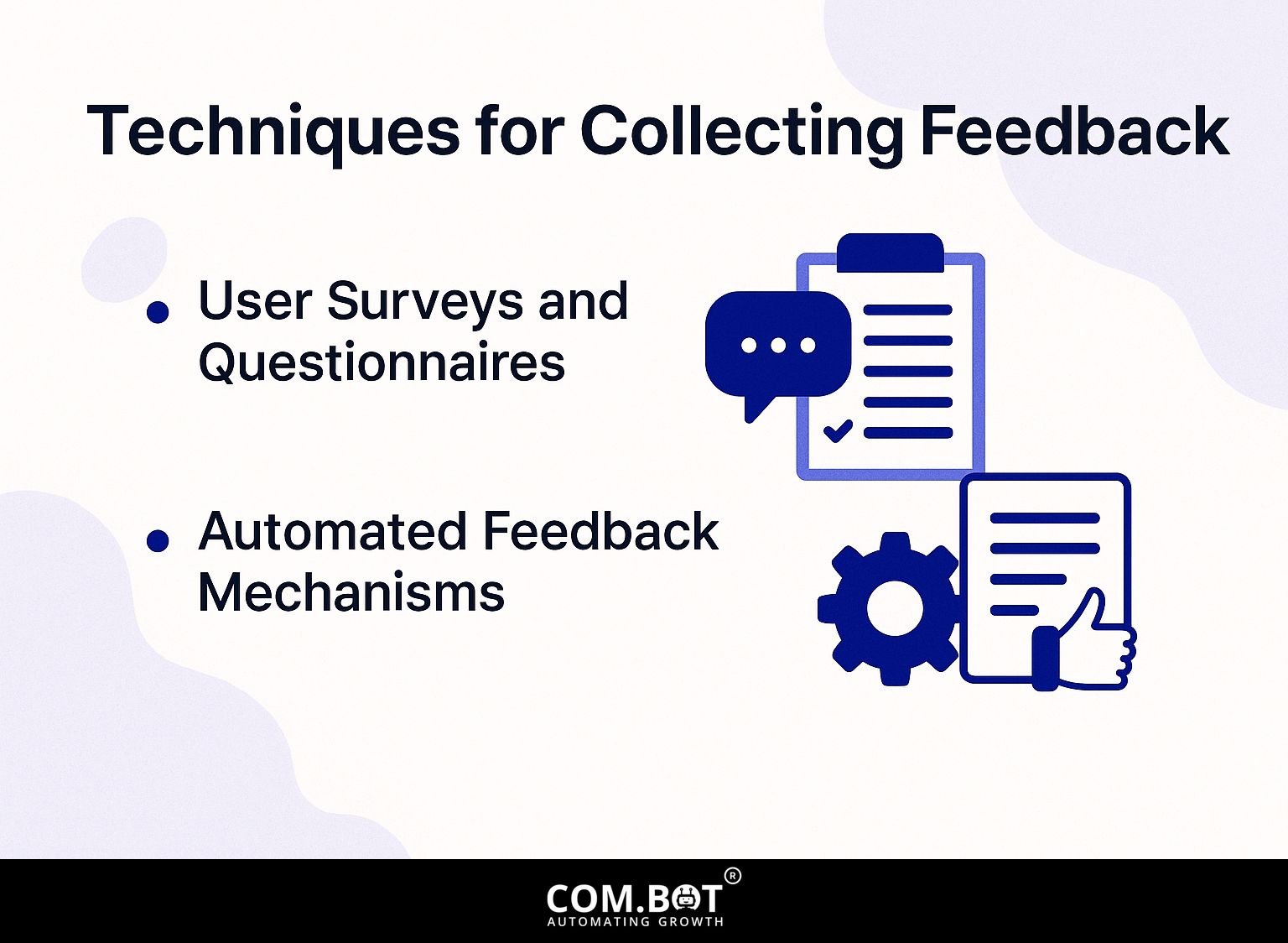
Getting feedback includes different methods to gather specific user opinions and detailed information.
User Surveys and Questionnaires
User surveys and questionnaires are powerful tools for gathering explicit feedback from users, yielding structured data for analysis.
To make good surveys, start by setting specific goals – figure out what information you want to gather.
Use tools like SurveyMonkey for customizable surveys or Google Forms for a user-friendly option.
When writing questions, focus on being clear and neutral to reduce bias. For instance, instead of asking, `How much did you love our product?’ use `How satisfied are you with our product on a scale of 1-5?’ This allows for balanced responses and clearer data interpretation.
Try out your survey with a few people first to check that it’s clear and useful before sharing it widely.
Automated Feedback Mechanisms
Tools like real-time analytics and sentiment analysis make gathering feedback quicker and improve reaction times.
To set up a good automatic feedback system, look at tools like Label Studio. It has labeling choices ranging from free to $199 per month and is great for teaching AI models.
Platforms like Qualtrics let you quickly send out surveys and analyze the results as they come in, so you can get new information fast.
For example, brands using Label Studio to assess user feedback have seen significant improvements in customer satisfaction by promptly addressing issues.
Using these tools makes it easier to gather feedback and quickly change products or services based on how users feel.
Analyzing Feedback Data
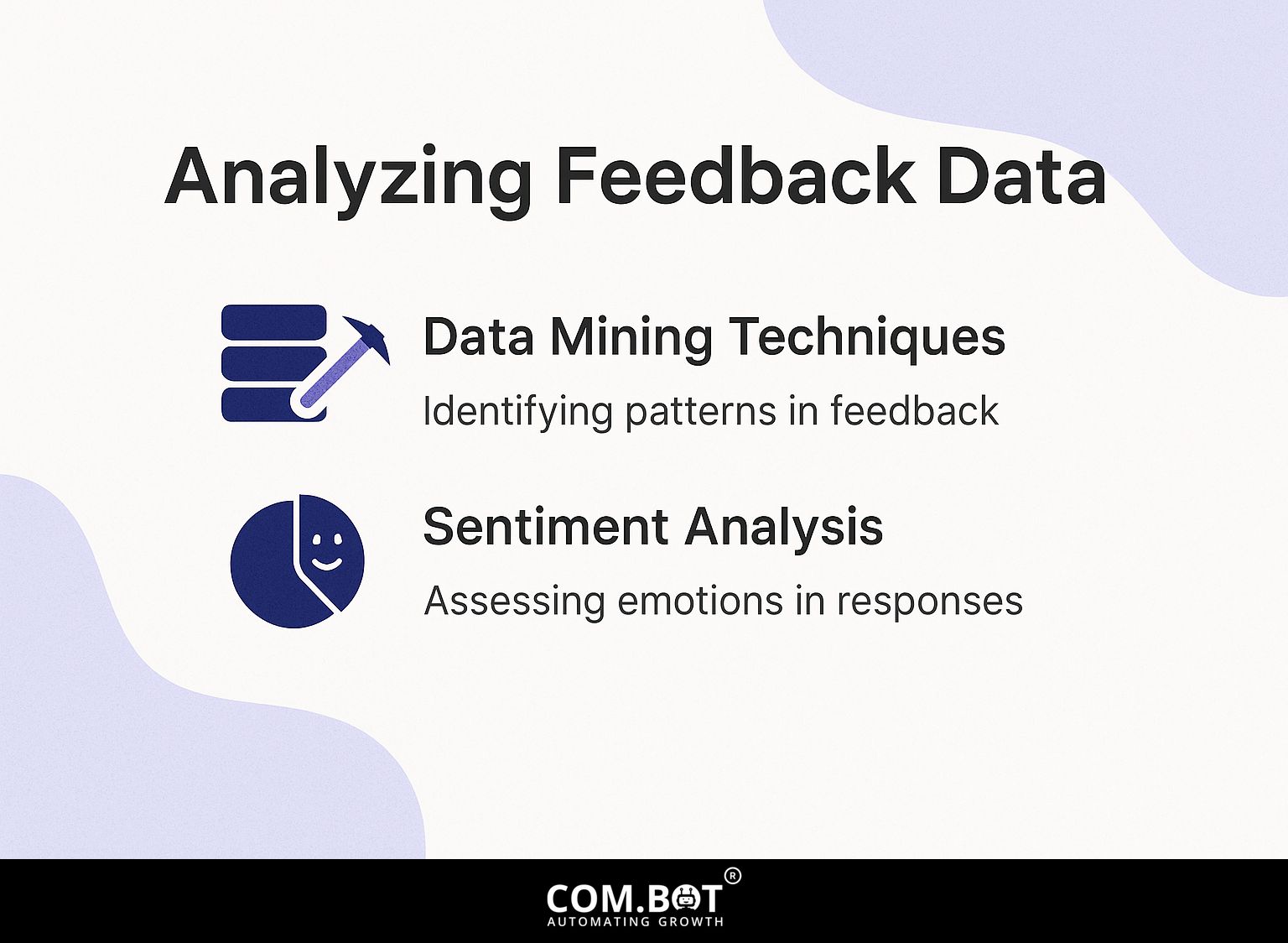
Looking at feedback information is important for getting useful details.
Use different methods to understand what users have said clearly.
Data Mining Techniques
Data mining techniques, such as clustering and classification, help identify patterns in feedback data, driving improvements in AI models.
For instance, clustering can group similar feedback together, allowing teams to target specific issues more effectively. Tools like RapidMiner (free-$250/month) let users perform these analyses without needing advanced coding skills.
When you gather user feedback data, bring it into RapidMiner. Then, use its grouping features to find hidden segments, and change your AI algorithms based on the information you learn.
Classification, on the other hand, helps predict upcoming feedback trends, making sure your AI model changes with user preferences. Start with simple datasets for practice, then scale as you gather more complex input.
Sentiment Analysis
Tools for analyzing sentiment determine users’ emotions from feedback, providing information on user satisfaction and ideas for improvement.
By using tools like MonkeyLearn, starting at $299/month, you can automatically analyze the feelings expressed in customer reviews, social media comments, and surveys.
This platform helps you build custom models designed for the unique needs of your industry. Companies such as Airbnb and Starbucks have used sentiment analysis to improve customer experience and adjust marketing strategies effectively.
Using this information makes products better and increases interest by solving customer problems more effectively.
Implementing Feedback for Improvement
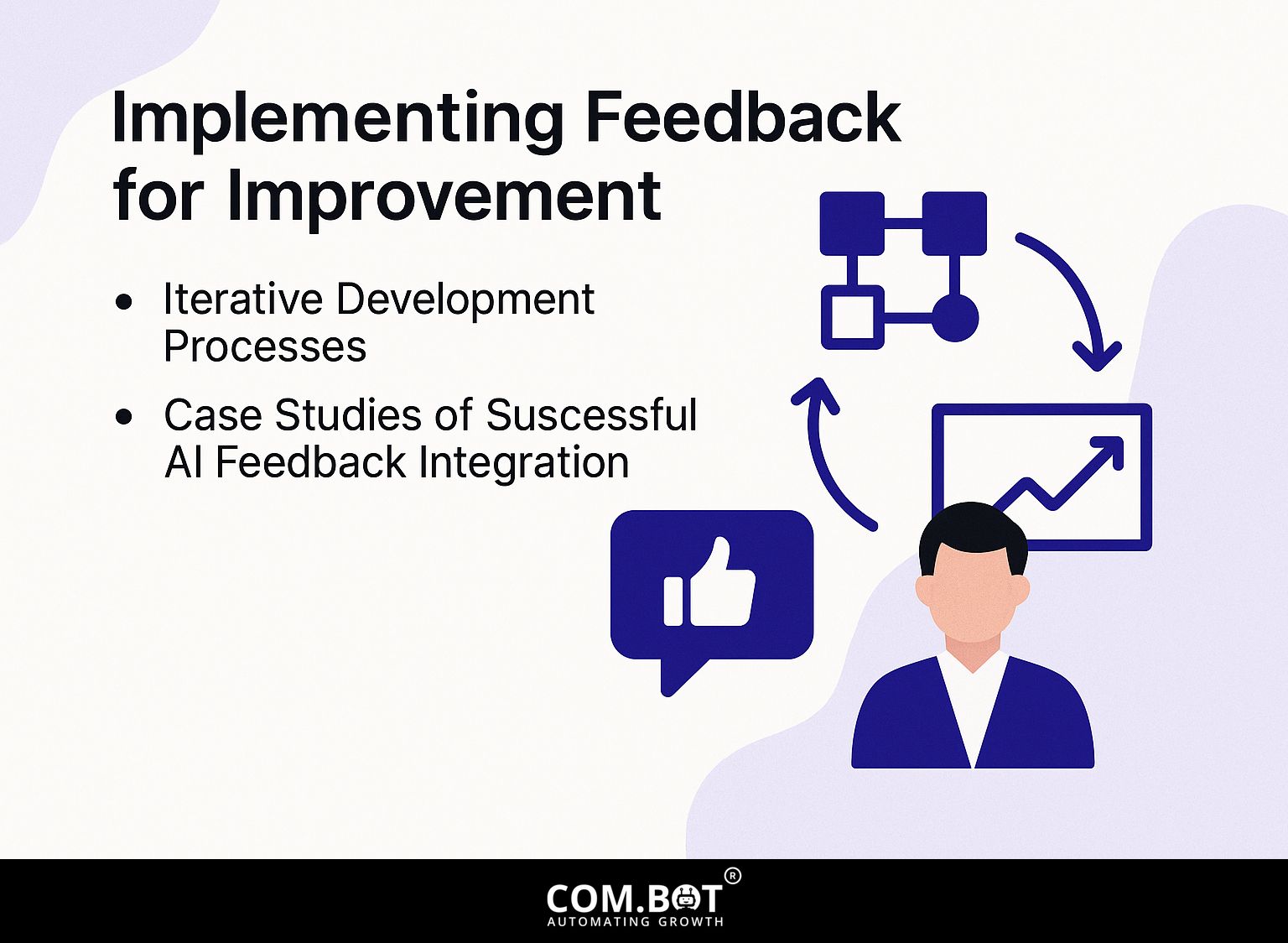
To use feedback well, you need to repeat the process, using what users say to make regular improvements during development.
Iterative Development Processes
Development approaches like Agile let AI teams use user feedback regularly to improve models as time passes.
Adding feedback in Agile requires following certain steps.
- Begin with sprint reviews where team members and stakeholders discuss what went well and what needs improvement.
- Tools like Jira facilitate this process by allowing for real-time tracking of task priorities and user stories.
- After collecting feedback, modify your product backlog accordingly, ensuring that the most critical user requests are prioritized.
- Tools like Confluence can record these findings, which makes it easier to share information.
- Regularly reviewing and changing your strategies based on user feedback creates a flexible development setting.
Case Studies of Successful AI Feedback Integration
Successful feedback from users has been included in AI systems across different industries, highlighting how user input can change AI performance.
A big retail company examined customer data from its mobile app to make better personalized recommendations. They used tools like Feedbackify to quickly carry out surveys and TensorFlow to process feedback into helpful information.
As a result, they saw a 20% increase in user engagement and a 15% increase in sales, highlighting the importance of focusing on customers.
A fintech startup employed user feedback via Intercom, refining its financial advice algorithms, which led to a 30% rise in customer satisfaction ratings.
Challenges in Feedback Implementation
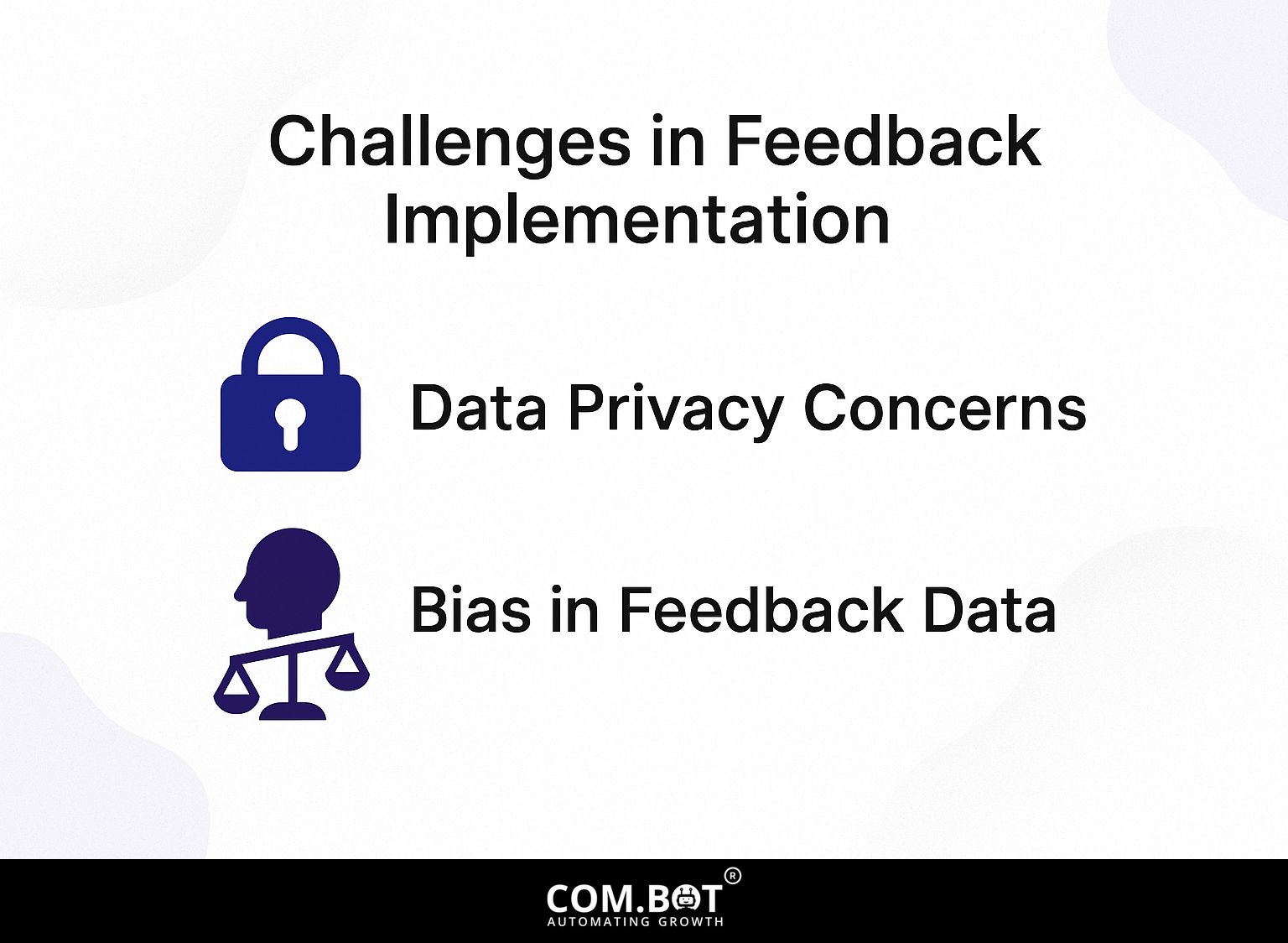
Although feedback systems in AI offer advantages, they encounter major obstacles such as concerns about data privacy and biases in feedback data.
Data Privacy Concerns
Concerns about data privacy in AI feedback systems need careful thought to keep user information safe while collecting important feedback.
To handle these problems, businesses can use compliance tools like OneTrust. It provides various solutions costing between $0 and $5,000 per month, helping companies manage consent choices and privacy statements properly.
Using tools like TrustArc helps to carry out privacy impact assessments, ensuring that user data is handled responsibly.
Applying these solutions increases transparency and builds trust, which is important for keeping users engaged over time.
Regular checks of data practices can help meet rules like GDPR, improving overall data privacy plans.
Bias in Feedback Data
Bias in feedback data can greatly skew AI results, so it is important to find and reduce these biases during the feedback process.
To mitigate bias, start by ensuring diverse user sampling. Involve people from different age groups and cultures to gain a broader set of viewpoints.
Use Google Forms to create surveys. Make sure the questions are clear and unbiased to prevent influencing answers. Use statistical methods such as stratified sampling to accurately analyze feedback.
Establish peer review protocols where multiple team members assess feedback independently, minimizing individual bias.
This thorough approach creates more reliable data, which aids in improving AI models.
Future Trends in AI Feedback Systems
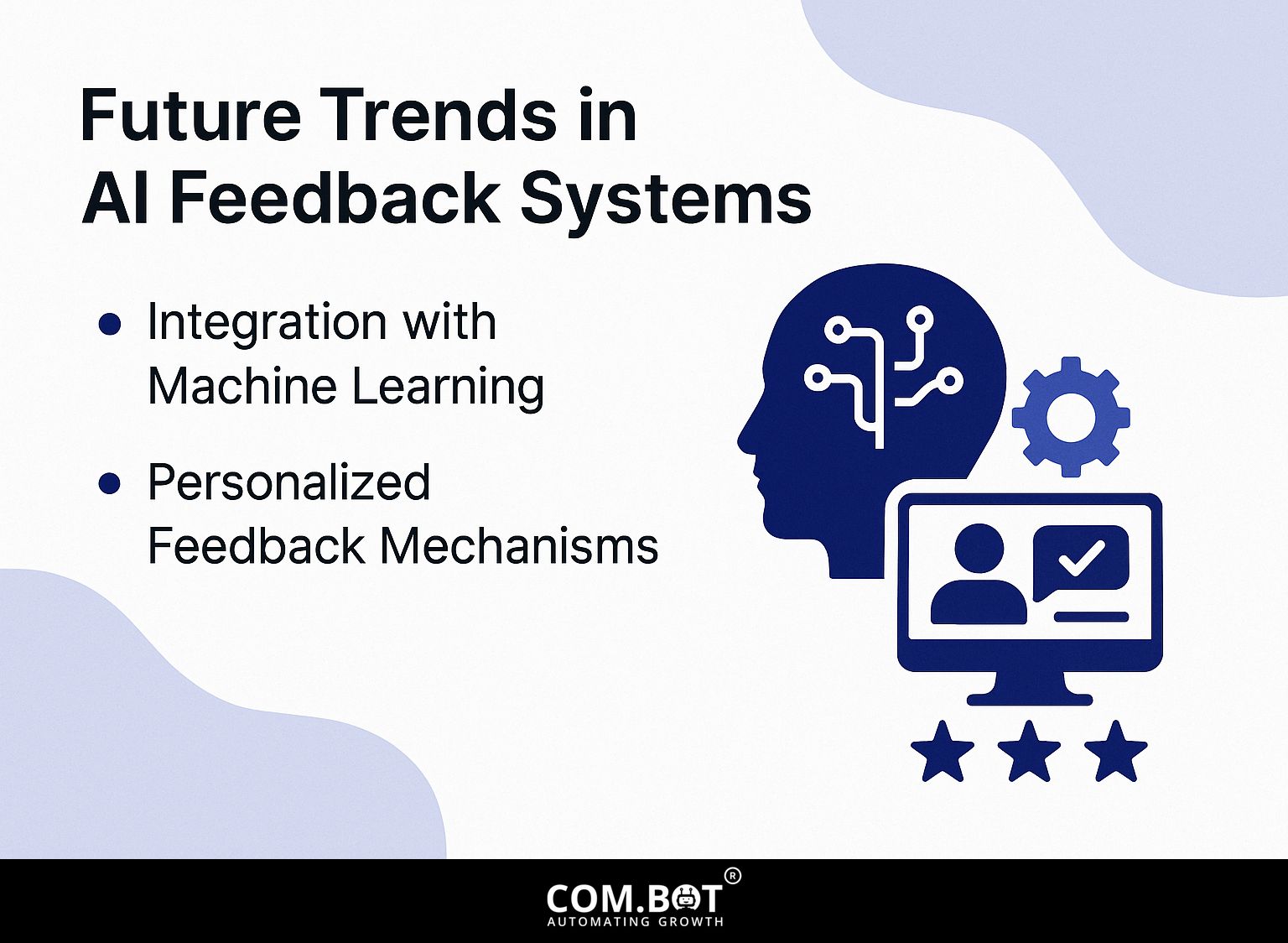
AI feedback systems are improving to give more personalized responses, making user interactions better and improving the model’s performance. For those looking to enhance these systems further, our deep dive into feedback improvement techniques offers valuable insights.
Integration with Machine Learning
Linking feedback systems with machine learning helps AI systems keep learning and changing over time.
To effectively implement feedback in your machine learning workflow, consider using TensorFlow and PyTorch as foundational tools.
With TensorFlow, you can use the Keras API to create models that have features like EarlyStopping, which lets you check how the model is doing over multiple steps.
Alternatively, PyTorch supports flexible computation graphs, allowing models to be changed based on real-time feedback from loss metrics during training.
Both systems have been successfully applied in areas such as healthcare for predicting medical conditions and finance for assessing risks, demonstrating their ability to handle new information.
Personalized Feedback Mechanisms
Feedback systems use individual user data to generate specific responses, greatly increasing user satisfaction and participation.
To implement effective feedback systems, start by utilizing analytics tools like Google Analytics and Hotjar.
Google Analytics can track visitor behavior and traffic patterns, helping you understand user interactions on your site. Hotjar shows heatmaps and session recordings that display how users move through your pages.
Bring together this information to find shared challenges. Once you have the data, create specific content or adjustments that fit what your users want, providing them with an experience that connects with your audience.
Frequently Asked Questions
What is the importance of feedback for AI systems?
Feedback is important for AI systems because it helps them learn and get better at what they do. AI systems need feedback to fix mistakes, improve algorithms, and make better predictions.
How does feedback improve the performance of AI systems?
Feedback helps AI systems improve their algorithms and make better predictions. By constantly receiving feedback, AI systems can learn from their mistakes and improve their performance over time.
What are some techniques for providing effective feedback to AI systems?
Some techniques for providing effective feedback to AI systems include using a mix of positive and negative feedback, providing specific and actionable suggestions, and regularly evaluating the performance of the AI system.
Why is it important to regularly provide feedback to AI systems?
Regular feedback is important for AI systems because it helps them keep learning and getting better at their tasks. Without regular feedback, AI systems may continue to make the same mistakes and not reach their full potential.
Is human feedback necessary for AI systems to improve?
Yes, human feedback is necessary for AI systems to improve. While AI systems can learn from data, they require human input and feedback to understand complex concepts and situations.
Can AI systems provide feedback to humans?
Yes, AI systems can provide feedback to humans. With the advancement of AI technology, there are now AI systems that can evaluate and provide feedback on human performance, such as language use and facial expressions. This feedback can help humans improve their skills and interactions with AI systems.
